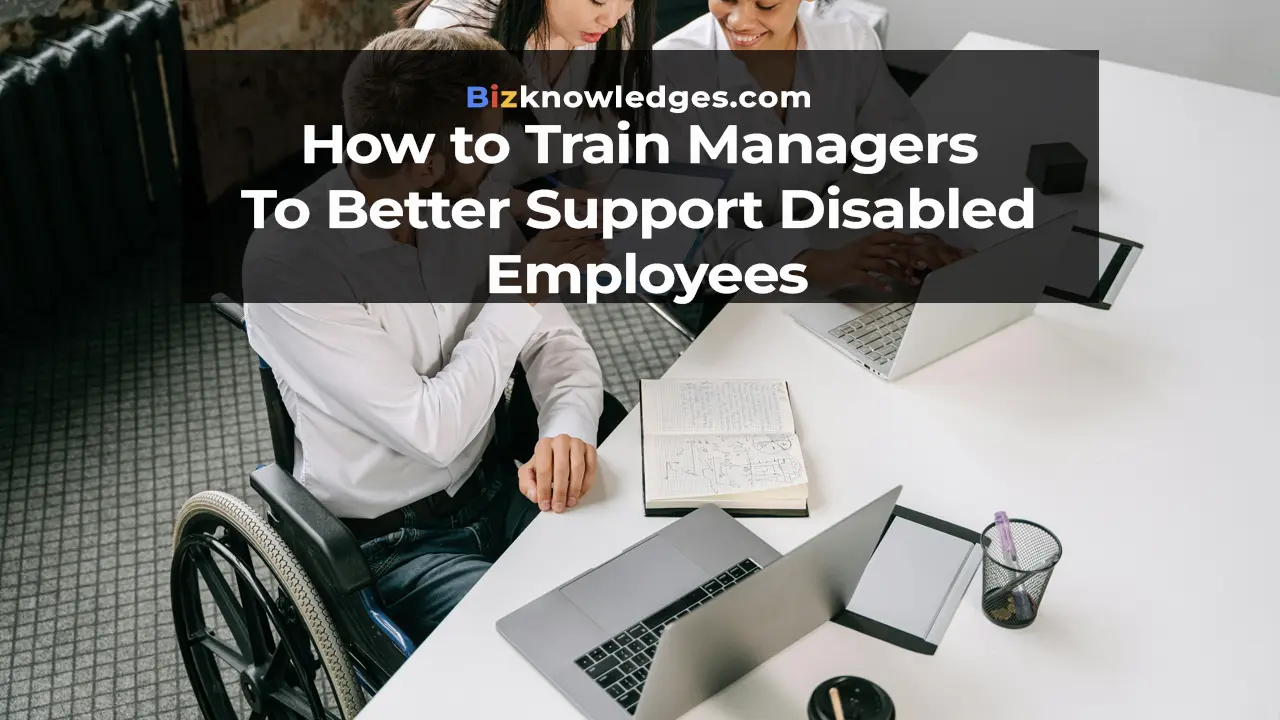How to Train Managers to Better Support Disabled Employees

Training managers to effectively support disabled employees fosters an inclusive and productive work environment. Managers are important in ensuring that employees overall feel valued and understood. Implementing training programs focusing on disabilities in the workplace can create a culture of acceptance and support. This article will explore strategies for training managers to enhance their support for disabled employees.
Understanding Disabilities in the Workplace
Recognizing what constitutes a disability is the first step toward effective support. Disabilities can range from physical impairments to mental health challenges. Many individuals may not visibly show their disabilities, which can lead to misunderstandings about their needs in the workplace.
Training should include information about various types of disabilities and how they affect work performance. Educating managers on the unique challenges that disabled employees face allows them to develop empathy and awareness. Understanding these nuances fosters an environment where disabled employees feel more comfortable discussing their needs.
Creating Awareness and Empathy
Awareness and empathy are essential components of any training program. By conducting workshops and role-playing exercises, managers can gain firsthand experience of the challenges disabled employees face. Engaging in discussions and activities helps to break down stereotypes and foster understanding.
Providing scenarios that illustrate common workplace interactions can help managers practice responding appropriately. This approach allows them to consider the perspectives of disabled employees when faced with various situations. Incorporating real-life examples into training makes learning more relatable and impactful.
Encouraging open communication is vital for building empathy. When employees feel heard, they are more likely to share their concerns and challenges, creating a more supportive environment.
Promoting Accessibility in the Workplace
Training should emphasize the importance of accessibility for disabled employees. Managers should be aware of various accommodations that can be made in the workplace. These may include modifying workspaces, providing assistive technologies, or implementing flexible work hours.

Organizations should regularly assess their facilities to identify potential barriers. Managers can then work with HR departments to implement necessary changes. Organizations prioritizing accessibility demonstrate their commitment to inclusivity and help create a more conducive work environment.
Encouraging Team Collaboration
Training should also underline the importance of teamwork in fostering an inclusive environment. Managers can be encouraged to create diverse teams that not only include disabled employees but also promote collaboration among all team members. This approach ensures that everyone feels like an integral part of the team and values their contributions.
Organizing team-building activities that emphasize collaboration can help break down barriers. These experiences allow employees to learn from one another and develop stronger relationships, which can enhance overall team dynamics. Training should also include strategies for facilitating open discussions among team members. This open dialogue can lead to greater understanding and support within the team.
Evaluating Training Effectiveness
Effective training programs should include evaluations to measure their impact on managerial support for disabled employees. Utilizing surveys and feedback forms can help organizations gather insights on how well managers implement what they learned.
Regular check-ins and follow-up training sessions can ensure managers continue developing their skills in supporting disabled employees. Evaluation metrics should focus on inclusivity, employee satisfaction, and workplace culture. Gathering data can inform future training programs and help identify areas for improvement.
Training managers to support disabled employees is essential for creating an inclusive workplace. Understanding disabilities, fostering empathy, promoting accessibility, encouraging collaboration, and evaluating training effectiveness are key to successful strategies. By implementing these practices, organizations can ensure that all employees feel valued and supported, ultimately leading to a more productive and diverse workforce.
Conclusion
Creating an inclusive workplace where disabled employees feel valued and supported begins with training managers effectively. By providing knowledge about various disabilities, fostering empathy, promoting accessibility, encouraging collaboration, and continuously evaluating progress, organizations can ensure that all employees have the support they need to thrive. Prioritizing these elements not only strengthens employee satisfaction but also enhances productivity and team dynamics, building a more diverse, engaged workforce.
